 |
| Category: Army
History/WW2 |

|
|
|
|
|
|
The Australian Red
Cross in two world wars |
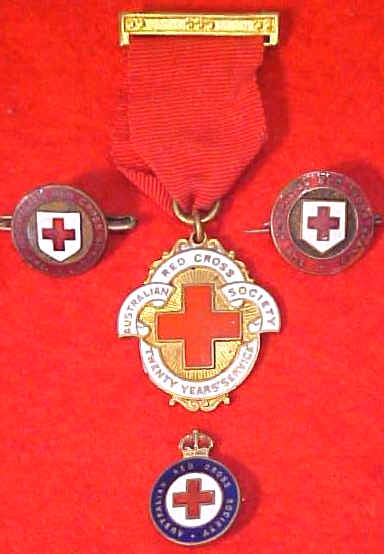 |
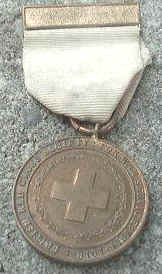
Red Cross medal
for War Service 1914/18 |
|
|
|
<<
Red Cross badge assortment |
The
International Committee of the Red Cross was formed in 1862. Initially
its purpose was to try and find ways of overcoming the inadequacy of
army medical services so as to alleviate the suffering of those wounded
in armed conflict. Over time it has extended its work to include many
forms of humanitarian aid in times of peace and war.
| The Australian Red Cross Society
(ARCS) was formed just after the outbreak of the First World War in
August 1914, originally as a branch of the the British Red Cross. It is
especially remembered in the the provision of "comforts" for
soldiers overseas.
Enormous sums of money were raised, and thousands of
women volunteers contributed their time by making vast quantities of
clothing: socks, vests, mittens, mufflers, pyjamas and a variety of
linen. Items were sent to headquarters located in the state capitals,
often using government houses as depots, where, after being sorted and
packed by yet more volunteers, they were sent to Britain or the front.
The effect of this work for the recipients was to bring comfort in its
truest sense, for a seemingly trivial gift of a bar of chocolate of a
pair of dry socks could bring the most profound relief for a soldier on
the Western Front. From the date of its inception until the armistice
the ARCS dispatched 395,695 food parcels and 36,339 clothing parcels |
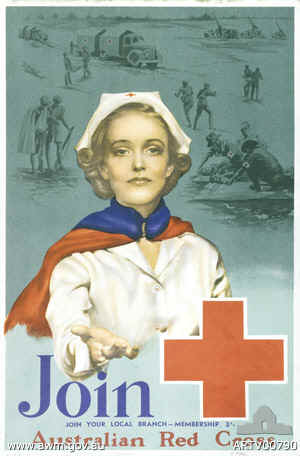 |
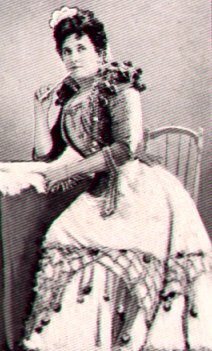 |
Between 1914 and 1918 more than £3,500,00
was collected and spent on Red Cross services to the Australian Forces
and Empire Forces.
Dame Nellie Melba (photo left) raised more than £90,000 for the
sick, wounded and prisoners of war by her Red Cross charity concerts and
grand opera in Melbourne. |
|
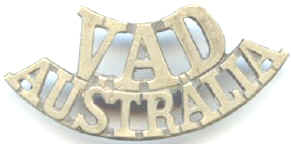
|
Voluntary Aid Detachments (VADs) also
provided an important public face for the Australian Red Cross. Young
women served in VADs to provide nursing and domestic services in
hospitals and convalescent homes. A few served overseas in Britain.  for
details for
details
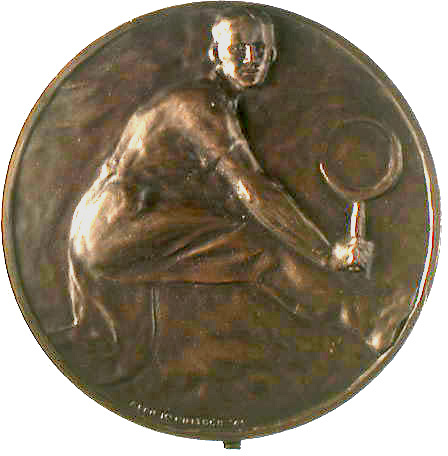 |
Less well known is the work the
Australian Red Cross undertook at an international level by establishing
agencies overseas dedicated to supplying families in Australia with
information about wounded and missing soldiers, and for providing
information about and comfort to soldiers declared prisoners of war.
During the Second World War the Red
Cross performed other services as well as the traditional catering,
fundraising and medical work. This included welfare work, hospital
visiting, vocational training, home help, library services, lorry and
ambulance driving. |
The Red Cross VADs again worked at hospitals and
convalescent homes alongside doctors and nurses. Similarly, the Red
Cross contributed to the well being of prisoners of war through food
parcels and medical attention.
The ARCS has been officially
recognised since 1944 as an auxiliary to the medical services of the
Defence Forces of the Commonwealth of Australia - Navy, Army and Air
Force. The Red Cross still performs humanitarian work in peacetime,
including tracing missing persons and prisoners of war. Text from AWM |
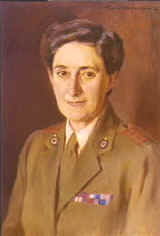 |
Vera Deakin (25 December 1891
– 9 August 1978) |
| Vera was the youngest
daughter of Australian Prime Minister Alfred Deakin. She studied at
Melbourne University and at the Melbourne Conservatorium of Music. Just
prior to the outbreak of the First World War, she volunteered her
services establishing the Wounded and Missing Enquiry Bureau of the
Australian Red Cross in Cairo, Egypt in 1915.
This office later moved to London.The
aim of the bureau was to provide information for relatives of Australian
soldiers who had been listed by the army as either wounded or missing,
killed or a prisoner of war. |
| It was the
official link between prisoners and their families and also maintained
full casualty lists for each state. The War Memorial has the records she
and her helpers in the Wounded and Missing Enquiry Bureau created during
1915-1919. Vera Deakin was awarded an OBE in 1919 for her services as
head of the Bureau.
During the Second World War she was
Director of the Wounded and Missing Inquiry Bureau of the Victorian
Division of the Australian Red Cross and later was Vice Chair of the
Australian Red Cross.
Vera Deakin married Thomas Walter
White in March 1920, and became Lady White in 1952 when her husband, the
High Commissioner in London, was knighted. Lady White remained active in
the Australian Red Cross until the 1970s. Text
& photo from AWM |
|
The Red Cross emblem |
|

|
| The Red Cross emblem
carries profound significance. By its proper use it saves lives. In
times of conflict it is the visible sign of the protection conferred by
the Geneva Conventions. In peace time it indicates that a person or
object is linked to the Red Cross movement and its fundamental
principles of humanity, impartiality, independence, and voluntary
service.
The emblem's origins lie with the
founder of the International Red Cross Committee, Henry Dunant. Dunant
was travelling in northern Italy in 1859 during the country's war of
unification. By chance he witnessed the results of the Battle of
Solferino in 1859, and was vividly impressed by the sight of thousands
of wounded soldiers left to die without medical care. One of the reasons
for this neglect was that army medical services were not distinguished
by an emblem easily identified by all parties to the conflict.
In 1863 an international conference
met in Geneva to try and remedy the ineffectiveness of army medical
services. The following year the first of the Geneva conventions were
passed, in which a red cross made of five equal squares on a white
background was officially recognised as the distinctive sign of medical
services of armed forces.
This distinctive symbol provides
protection for the wounded and for all those who attend and care for
them. |
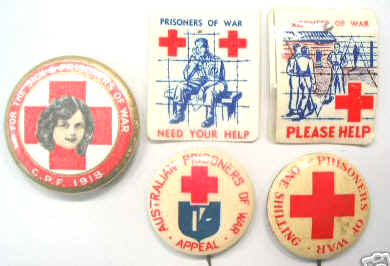 |
- Red Cross fund raising buttons from
WW! and WW2
|
|